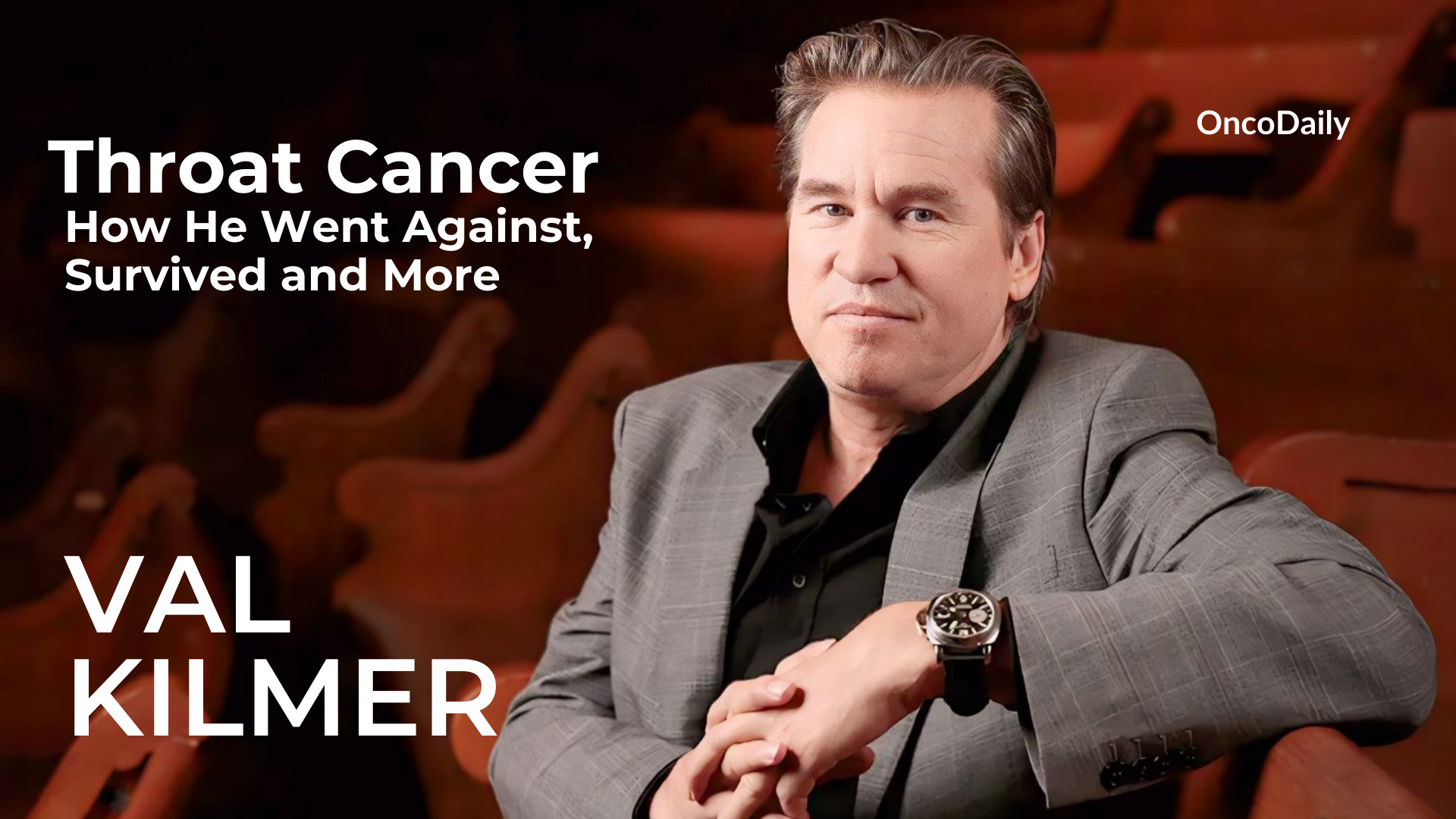Val Kilmer is an American actor known for his versatile roles in film and theater. Born on December 31, 1959, in Los Angeles, California, he began his acting career in high school and later became the youngest student accepted into Juilliard’s drama program. Kilmer made his film debut in the 1984 spoof Top Secret! and gained fame with his role as “Iceman” in the 1986 blockbuster Top Gun.
He was diagnosed with throat cancer in 2015. He initially kept his diagnosis private but later opened up about his battle, revealing that he underwent a tracheotomy, chemotherapy, and radiation therapy. These treatments have significantly affected his voice and breathing, but Kilmer has since embraced his condition, continuing to work in the industry and raising awareness about cancer.
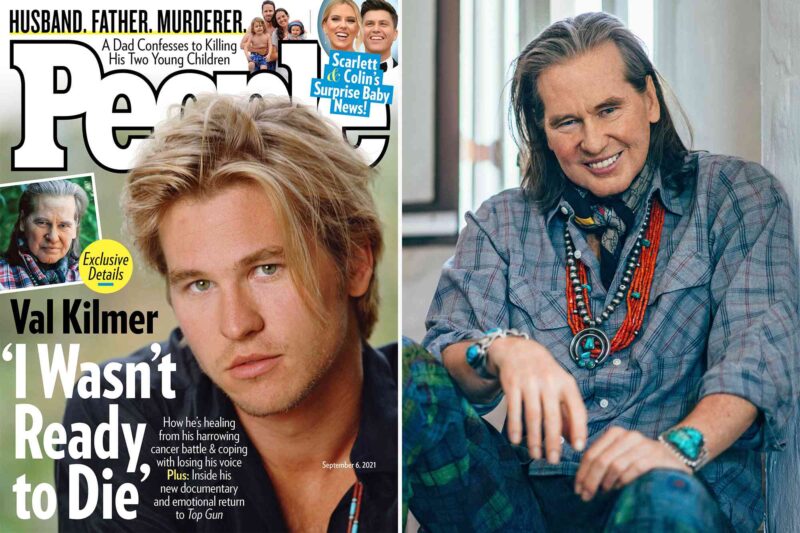
How Did Val Kilmer Get Throat Cancer?
Val Kilmer likely developed throat cancer due to his long history of heavy smoking, which is a well-established risk factor for the disease. While Kilmer has not publicly confirmed all the details of his diagnosis, smoking is one of the primary causes of throat cancer, as it can damage the cells lining the throat and lead to cancerous mutations over time. Additionally, other factors, such as his past lifestyle choices, could have contributed to the development of his cancer. However, the exact cause of his throat cancer has not been officially stated.
Symptoms
Here are the key signs and symptoms of throat cancer:
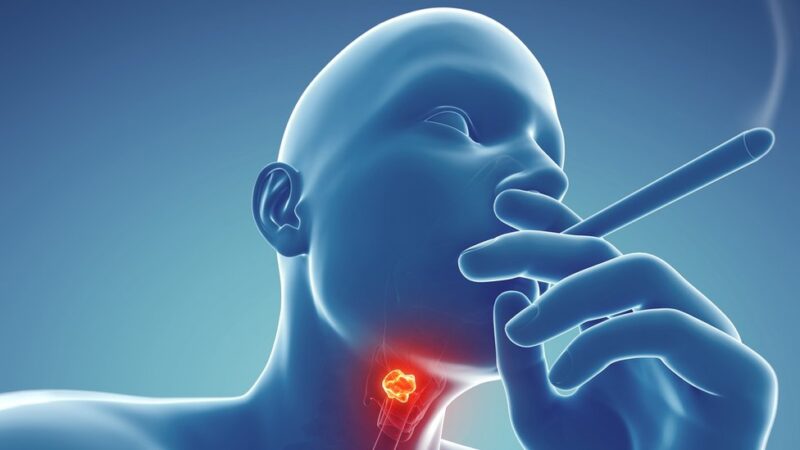
Early Warning Signs
- A persistent sore throat or cough
- Hoarseness or changes in your voice
- Ear pain
- Difficulty swallowing
Other Common Symptoms
- Coughing up blood
- Swelling or lumps in the neck
- Unexplained weight loss
- Red or white patches in the mouth or throat
- Sores in the mouth or throat that don’t heal
- Frequent headaches and facial pain
- Changes in hearing
Advanced Symptoms
- Severe pain when swallowing
- Breathing difficulties
- Frequent nosebleeds
It’s important to note that many of these symptoms can be caused by less serious conditions. However, if you experience any of these symptoms for more than a few weeks, especially if you are a smoker or heavy drinker, it’s crucial to see your doctor for an evaluation and possible throat cancer screening
What Were Val Kilmer’s Initial Reactions to His Diagnosis?
Val Kilmer’s Christian Science beliefs significantly impacted his initial treatment choices when he was diagnosed with throat cancer in 2014. As a devout Christian Scientist, Kilmer initially rejected conventional medical treatments, believing that prayer and spiritual healing would be sufficient. He referred to his illness as the “suggestion of throat cancer,” reflecting the belief that illness is a misperception rather than a physical reality.
However, his children, who did not share his faith, were deeply concerned about his health. Their fears played a crucial role in convincing Kilmer to seek traditional medical care.
Eventually, Kilmer underwent surgery, chemotherapy, and radiation. Despite these treatments, he has expressed that he believes his faith and prayer were the primary sources of healing. He has mentioned that the side effects of the treatments, such as his tracheostomy tube, were more challenging than the cancer itself, highlighting the conflict between his beliefs and the reality of his condition.
What was the Prognosis?
The prognosis for throat cancer depends on several factors, including the cancer stage at diagnosis, the specific location within the throat, and the patient’s overall health.
The survival rate of throat cancer predominantly depends on the stage at diagnosis and type of the tumor. According to the National Cancer Institute:
- Early-Stage Throat Cancer: The 5-year survival rate is about 60-90%. Early detection leads to a better prognosis.
- Advanced-Stage Throat Cancer: The 5-year survival rate drops to around 30-50% for cancers that have spread to nearby tissues or lymph nodes.
- HPV-Related Throat Cancer: These types typically have a better prognosis, with a 5-year survival rate of around 75-80%, even in more advanced stages.
Early detection and treatment are crucial for improving outcomes.
What Treatments Did Val Kilmer Undergo?
Val Kilmer’s throat cancer treatment involved a combination of chemotherapy, radiation therapy, and a tracheostomy. These therapies are standard for treating cancers of the head and neck, especially when tumors are localized but aggressive, like in Kilmer’s case.
Chemotherapy
This treatment works by using powerful drugs to target and kill rapidly dividing cancer cells. In head and neck cancers, chemotherapy is often used in combination with radiation to enhance the effectiveness of both treatments. Although it can reduce or eliminate cancer cells, it often comes with side effects like nausea, fatigue, and immune suppression, which can complicate recovery.
Radiation Therapy
Radiation therapy uses high-energy beams to shrink tumors and destroy cancer cells. It is particularly effective in treating localized cancers like throat cancer. However, it can cause side effects such as dry mouth, difficulty swallowing, and changes in the voice—symptoms Kilmer experienced. Over time, this led to a significant impact on his vocal ability, necessitating his use of assistive technology for communication post-treatment.
Tracheostomy
Due to the progression of his illness, Kilmer underwent a tracheostomy, a surgical procedure that opens the airway to allow breathing. This procedure, combined with radiation and chemotherapy, impacted his speech and respiratory function, though he has adapted to modern voice technologies.
How Did Val Kilmer Overcome Throat Cancer?
Kilmer’s cancer diagnosis initially remained private, but he publicly acknowledged it in 2017. Kilmer’s public battle with throat cancer has highlighted the rising incidence of oropharyngeal cancers, particularly those linked to human papillomavirus (HPV). Experts note that over 70% of these cancers are now associated with HPV, a significant shift from previous trends where smoking was the primary cause.
Kilmer’s story resonates with many, as he joins a list of public figures who have bravely shared their cancer journeys, helping to raise awareness and reduce the stigma surrounding the disease. His experience serves as a reminder of the importance of early detection and treatment, as well as the need for ongoing conversations about health and wellness in the public sphere.
Mental and Emotional Challenges
Kilmer’s battle with cancer was not just physical; it also took a toll on his mental and emotional well-being. He expressed feelings of isolation and fear, particularly regarding how his illness affected his family. He was hesitant to seek treatment away from them, fearing their profound anxiety about his condition. During his recovery, Kilmer found solace in creative outlets. He began painting and writing:
“When one thing is taken, though, another is given. With little voice, my creative juices were boiling over”.
This artistic expression became a crucial part of his healing process, allowing him to channel his experiences into new forms of creativity.
Support from Family and Friends
Despite the difficulties, including a tracheotomy that affected his speaking ability, his children have described him as resilient and full of energy. Jack noted that their father has remained “crazy prolific” in his creative endeavors since his diagnosis, often using humor to cope with his situation. He mentioned, “Sometimes you can’t shut him up,” indicating that Kilmer maintains a positive and engaging presence despite his health issues.
Mercedes has shared how inspiring it has been to witness her father’s approach to his illness, emphasizing his humor even during tough times in the hospital. She stated, “He’s always been very physically resilient,” and reflected on how challenging it can be to navigate such experiences with a parent in the public eye.
Both children have taken active roles in their father’s artistic projects. They co-produced the documentary Val, which provides an intimate look at Kilmer’s life, showcasing not only his professional journey but also personal moments with family. Mercedes described the film as an accurate representation of their father’s life, while Jack narrated parts of it, bringing his father’s words to life. In addition to their work on the documentary, the Kilmer siblings have collaborated with their father in other creative ventures. For instance, Mercedes starred alongside Val in the film Paydirt, which allowed them to bond over their shared passion for acting
How Armenian-American superstar Cher has Supported Val Kilmer during throat cancer diagnosis?
One of the most notable figures in Kilmer’s support network is his long-time friend Cher. After Kilmer was diagnosed with throat cancer in 2015, Cher offered him a place to stay in her guest residence, providing both emotional and practical support. Kilmer recounts a particularly frightening moment during his treatment when he experienced a health scare at Cher’s home. Despite the seriousness of the situation, Cher’s presence helped to bring humor and comfort, showcasing the depth of their friendship and her role in his healing process
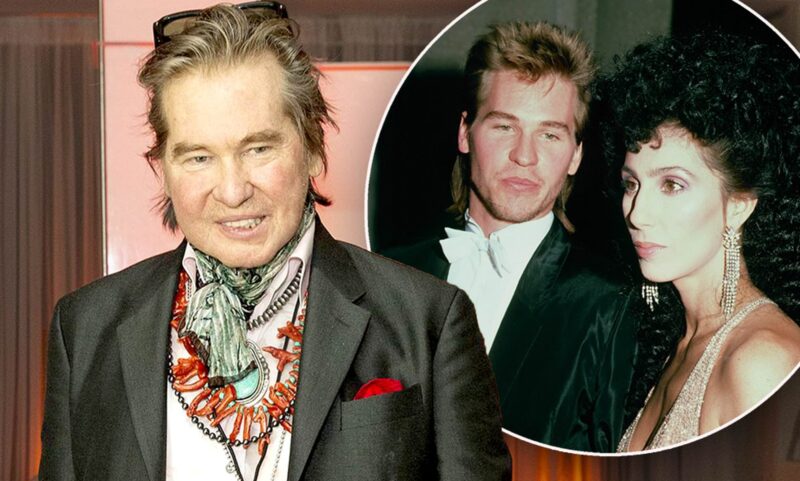
How Did Art Help Kilmer in His Recovery?
Kilmer’s artistic pursuits include painting, music, and writing. He has created numerous abstract art pieces, which he describes as a means of communication and emotional healing. In an interview, Kilmer expressed that with his diminished voice, his “creative juices were boiling over,” prompting him to dive back into his artistic roots.
“I felt the art healing me. I wanted to share this with others”.
 His artwork often features vibrant colors and abstract forms, which he shares on social media, inviting viewers to connect with his experiences and emotions. For instance, he mentioned in an Instagram post that he had been exploring “a beautiful ocean of blues,” reflecting his emotional state and creative exploration during recovery. Examples of Artistic Endeavors
His artwork often features vibrant colors and abstract forms, which he shares on social media, inviting viewers to connect with his experiences and emotions. For instance, he mentioned in an Instagram post that he had been exploring “a beautiful ocean of blues,” reflecting his emotional state and creative exploration during recovery. Examples of Artistic Endeavors
Val Kilmer is an avid painter, creating abstract and expressionist works. His art often incorporates vivid colors and symbolism, reflecting his journey and spirituality. In 2020, he launched an art exhibit titled Wanderer, showcasing his paintings and sculptures. His work has been well-received, with exhibitions in galleries across the U.S.
The Impact of Art on Mental Health
The therapeutic benefits of art for Kilmer align with broader research indicating that artistic expression can significantly enhance mental health for cancer patients. Engaging in art has been associated with reduced levels of anxiety, depression, and fatigue among individuals undergoing cancer treatment. Kilmer’s experience echoes these findings; he has noted that creating art allowed him to cope with the emotional turmoil of losing his voice and facing the challenges of his illness.
Moreover, art therapy has been shown to provide patients with a sense of control and empowerment during uncertain times, which is crucial for mental well-being. Kilmer’s ability to express his feelings through art helped him manage the intense anxiety associated with his treatment and recovery process.

What Is Val Kilmer’s Life Like After Cancer?
Kilmer has reported being cancer-free since 2020, but the treatments have left him with lasting effects, including the need for a feeding tube and a voice box for communication. He has described the difficulty of speaking, stating,
“I can’t speak without plugging this hole in his throat”
and has had to adapt to these changes in his daily life.
Return to Acting
Despite the challenges posed by his throat cancer diagnosis and treatment, Val Kilmer has made a triumphant return to acting. In 2022, he reprised his iconic role as Tom “Iceman” Kazansky in the highly anticipated sequel “Top Gun: Maverick” alongside Tom Cruise. To portray Iceman, who now communicates via typing due to his own health struggles, the filmmakers used Kilmer’s actual voice, which was digitally altered for clarity. They did not use AI technology to recreate his voice, contrary to some reports.
Kilmer’s return to the big screen in “Top Gun: Maverick” has been praised as a powerful moment that brings hope to cancer patients and their families. His ability to continue pursuing his passion despite the impact of cancer on his speech is a testament to his determination and resilience.
How does Val Kilmer Collaborate to create an AI-powered voice model?
In 2021, Kilmer collaborated with London-based tech startup Sonantic to create an AI-powered voice model. The company used archival footage and old audio recordings of Kilmer to teach its voice engine to mimic his iconic speech patterns. Sonantic developed new algorithms to produce a high-quality voice model that captured the essence of Kilmer’s natural sound.
Ongoing Health Challenges
Kilmer’s cancer treatment has left him with ongoing health challenges. He has lost his natural speaking voice and now uses an electric voice box to communicate. Despite these obstacles, Kilmer remains committed to his career and engages in daily vocal exercises to maintain his abilities. He acknowledges the difficulties posed by his altered speech but sees it as a driving force to continue acting and pursuing creative projects. In his 2020 documentary “Val” and his memoir “I’m Your Huckleberry,” Kilmer has shared his experiences navigating his health journey and recovery.
As of 2020, Kilmer has been cancer-free for four years, emphasizing the absence of any cancer recurrence. However, he continues to undergo medical treatments, including the use of a feeding tube to eat.

I’m Your Huckleberry by Val Kilmer
Val Kilmer Passed Away at the Age of 65
Unfortunately, Val Kilmer passed away on April 1, 2025, at the age of 65, due to complications from pneumonia. His health had been a concern for several years following his diagnosis with throat cancer in 2014. Despite successfully going into remission, the treatments, including two tracheotomies, significantly impacted his quality of life, leaving him with a weakened voice and reduced energy levels.
You Can Also Read Val Kilmer Dies at 65: The Actor Who Fought Throat Cancer and Inspired Generations by OncoDaily
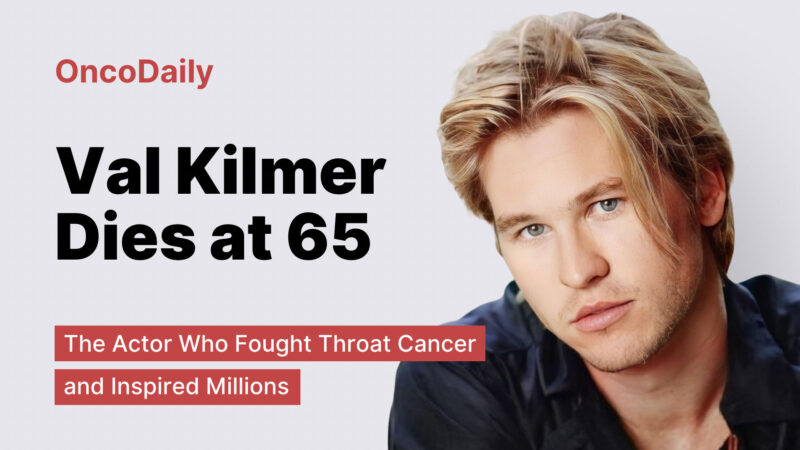
What Causes Throat Cancer?
Throat cancer typically arises from genetic mutations in the cells lining the throat, which can lead to uncontrolled cell growth and tumor formation. According to the American Cancer Society (ACS) and National Cancer Institute (NCI) these mutations may result from several factors, including:
- Age: The risk increases significantly with age, particularly for those over 55. Most diagnoses occur after age 65.
- Sex: Men are approximately five times more likely to develop throat cancer than women, largely due to higher rates of tobacco and alcohol use among men.
- Race: African American men have a higher incidence of throat cancer compared to other racial groups.
Smoking and Alcohol
Smoking: According to Centers for Disease Control and Prevention (CDC) Smoking is responsible for about 60-80% of throat cancers. Smokers are several times more likely to develop the disease than non-smokers.
Excessive Alcohol Consumption: Heavy drinkers are up to five times more likely to develop throat cancer. The risk increases dramatically—up to 35 times—when combined with smoking (National Cancer Institute (NCI) ).
HPV and Throat Cancer
HPV Infection: HPV, particularly HPV-16, is linked to about 70% of oropharyngeal cancers. The incidence of HPV-related throat cancer has been rising, particularly among men(American Cancer Society (ACS) ).
Poor Oral Hygiene: Poor oral hygiene is associated with an increased risk, though exact figures are less defined (Journal of Clinical Oncology)
How Can Throat Cancer Be Prevented?
Prevention of throat cancer involves key lifestyle changes and vaccinations, particularly against HPV, a major cause of oropharyngeal cancer.
Lifestyle Changes
According to the American Cancer Society and CDC, adopting healthier habits can significantly reduce throat cancer risk:
- Quit Smoking and Avoid Tobacco Products
Smoking accounts for up to 80% of throat cancer cases. Avoiding all forms of tobacco, including cigars and chewing tobacco, greatly reduces your risk. - Limit Alcohol Consumption
Excessive alcohol intake, especially combined with smoking, increases throat cancer risk. Limiting alcohol to one drink daily for women and two for men is recommended. - Stay Hydrated
Drinking plenty of water keeps your throat tissues healthy and reduces irritation, supporting your body’s defenses. - Adopt a Healthy Diet
A balanced diet rich in fruits, vegetables, and antioxidants can help reduce cancer risk. Foods like berries and leafy greens neutralize harmful free radicals. - Limit Exposure to Harmful Chemicals
Exposure to toxic substances like asbestos can increase cancer risk. The Occupational Safety and Health Administration recommends protective equipment in hazardous environments.
HPV Vaccination and Throat Cancer Prevention
Human papillomavirus (HPV) is a leading cause of throat cancer, but vaccines can significantly lower this risk.
- HPV Vaccination Effectiveness: The CDC reports that HPV vaccines reduce cancer risk by 56% in men and 36% in women, including throat cancers.
- Preventable Cancers: The NCBI states that nearly 34,400 cancers, including oropharyngeal, can be prevented with the 9-valent HPV vaccine.
- Vaccination Coverage Gap: Despite these benefits, only 38.6% of U.S. youth had received at least one dose by 2022, per Johns Hopkins Public Health.
Top 10 Movies of Val Kilmer
Val Kilmer has starred in a wide variety of films, showcasing his range as a versatile and talented actor. From action-packed blockbusters to critically acclaimed dramas, here are the top 10 movies that define his impressive career.
1. Tombstone (1993)
Kilmer’s portrayal of Doc Holliday in Tombstone remains one of his most iconic roles. His memorable performance as the gunslinger with a death wish earned him critical acclaim and solidified his status as a leading man.
2. Top Gun (1986)
In Top Gun, Kilmer plays Iceman, the cocky fighter pilot and rival to Tom Cruise’s Maverick. This blockbuster not only boosted his career but also became a cultural phenomenon that continues to resonate today.
3. The Doors (1991)
Kilmer completely transformed into Jim Morrison, the legendary lead singer of The Doors. His performance as the rock icon was so convincing that it garnered praise for its authenticity and depth.
4. Heat (1995)
In Michael Mann’s crime drama Heat, Kilmer stars alongside Robert De Niro and Al Pacino. His portrayal of skilled bank robber Chris Shiherlis added to the film’s intense atmosphere, contributing to its status as a classic heist movie.
5. Batman Forever (1995)
Val Kilmer took on the role of Bruce Wayne/Batman in Batman Forever. While the film has a mix of reviews, Kilmer’s take on the Caped Crusader remains one of his most recognizable roles.
6. The Saint (1997)
In The Saint, Kilmer plays master thief and master of disguise Simon Templar. The film allowed him to showcase his range as he took on various personas while delivering a thrilling action performance.
7. Willow (1988)
Kilmer starred as the brash, swashbuckling swordsman Madmartigan in the fantasy epic Willow. His performance brought humor and charisma to the film, making it a beloved classic for fans of the genre.
8. True Romance (1993)
In a brief but unforgettable role, Kilmer plays the apparition of Elvis Presley in True Romance. His quirky portrayal of The King added a unique layer to the Quentin Tarantino-penned film.
9. Kiss Kiss Bang Bang (2005)
In this neo-noir comedy, Kilmer plays Gay Perry, a private detective with quick wit and charm. His chemistry with Robert Downey Jr. makes Kiss Kiss Bang Bang a cult favorite and one of Kilmer’s best comedic roles.
10. The Ghost and the Darkness (1996)
In The Ghost and the Darkness, Kilmer stars as an engineer tasked with hunting man-eating lions in Africa. The film showcases his ability to lead action-packed thrillers while maintaining emotional depth.
FAQs
What type of cancer did Val Kilmer have?
Val Kilmer was diagnosed with throat cancer, specifically a form that affects the tissues in the neck and throat. His cancer was likely linked to heavy smoking, a common risk factor for this type of cancer.
What treatments did Val Kilmer undergo for throat cancer?
Val Kilmer underwent chemotherapy, radiation therapy, and a tracheostomy to treat his throat cancer. These treatments significantly impacted his voice and breathing but were essential in fighting the cancer.
How does smoking contribute to throat cancer?
Smoking is one of the leading causes of throat cancer. Tobacco use damages the cells lining the throat, leading to mutations that can develop into cancer. Smokers are several times more likely to develop throat cancer than non-smokers.
Can throat cancer affect your voice permanently?
Yes, throat cancer, especially when it involves treatment like radiation or a tracheostomy, can permanently affect the voice. In Val Kilmer’s case, his vocal cords were impacted, resulting in long-term changes to his speaking ability.
How can throat cancer be prevented?
Throat cancer can be prevented by quitting smoking, reducing alcohol consumption, maintaining a healthy diet, staying hydrated, and getting vaccinated against HPV, which is linked to oropharyngeal cancers.
What is a tracheostomy, and why did Val Kilmer need one?
A tracheostomy is a surgical procedure where an opening is made in the neck to allow air to enter the lungs. Val Kilmer needed one due to the effects of his throat cancer treatment, which made normal breathing difficult.
What are the early warning signs of throat cancer?
Early symptoms of throat cancer include a persistent sore throat, hoarseness, difficulty swallowing, and ear pain. If these symptoms last for more than a few weeks, it is essential to seek medical evaluation.
Is throat cancer linked to HPV?
Yes, human papillomavirus (HPV), particularly HPV-16, is linked to oropharyngeal cancers. Getting vaccinated against HPV can significantly reduce the risk of developing this type of throat cancer.
How common is throat cancer?
Throat cancer is relatively uncommon but has been increasing due to the rise in HPV-related cases. It is more common among men and people with a history of smoking and heavy alcohol use.
Can throat cancer be cured?
Throat cancer can be treated successfully if caught early. The prognosis depends on the stage at diagnosis, but early-stage throat cancers have a high survival rate with prompt treatment.
Written by Aharon Tsaturyan, MD
